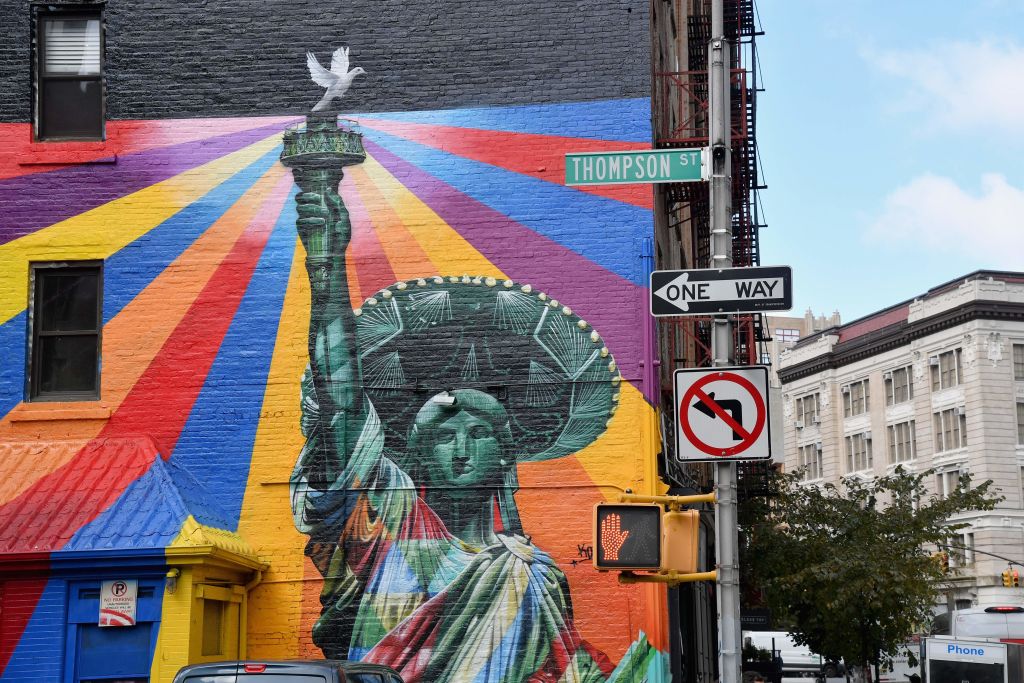
Srivastava is the founder of the Creative Impact and Experience Lab (CIEL), a cultural innovation strategy group, and the director of the Hispanics in Philanthropy/CAMMINA-supported WelcomeALL project.
The Trump administration wants us to believe we are in the midst of an immigration crisis.
While we are in a crisis, it’s one of our own making. What’s really tearing us apart is a crisis of conscience.
Claims that the migrants’ caravan contains “hordes,” “swarms,” or “armies” of Central Americans (and “criminals and unknown Middle Easterners”), and is ready to storm our border and invade our country, reek more of desperate fearmongering to secure midterm votes than of any grounding in reality. The Trump administration is doubling down on its formula of fear and xenophobia that helped Trump secure office in 2016. Recent threats to send up to 15,000 troops to the southern border—in a costly stunt that makes a mockery of the troops and threatens violence against the poor and hungry asylum-seekers making their way north—are a trial run for martial law, fascism, or worse.
Our country has for decades served as a place of refuge for those fleeing oppression and catastrophe. While our historical record toward immigrants and refugees is in fact not as idealistic and romantic as many would like to believe—there are too many instances of letting discrimination and fear rule over rationality and welcome—the promise has always been there, enshrined on the Statue of Liberty. We have repeatedly failed to meet that promise, but people across the political spectrum nevertheless committed to fulfillment of that ideal.
But the Trump Administration rejects this ideal in the starkest terms. It is redefining American society through white supremacist ideology and isolationism rather than equality and openness. Its goal is to remake the country’s social fabric through excluding and intimidating legal immigrants, naturalized citizens, families of immigrants, and those seeking refuge or asylum, particularly those from the Middle East, Africa, Asia, and Latin America. The Administration is systematically and intentionally destroying our bedrock values of refuge, asylum, and acceptance.
In response, I have a radical proposal. We should celebrate.
This is not as glib a suggestion as it might sound. In the years I have worked on migration and refugee issues, I have seen how celebrating diversity, inclusion, and integration creates more vibrant communities in ways that policy, advocacy, or protest cannot on their own. Purpose needs joy. Celebrating immigrants and listening to their stories is the right thing to do as ethical human beings. It is also effective.
Since President Donald Trump was inaugurated in 2017, I have been working with a group of advocates, artists, and civil society organizations in the U.S., Mexico, and Central America to explore how we can rebuild a culture of welcoming. There is no single formula; much of this work depends on intangibles. There are, however, some concrete steps that we can take:
These are just some of the ways people are resisting the Trump Administration’s mounting xenophobia, and how we can start rebuilding a more vibrant country.
It is of course crucial that we also remain committed to active civic participation: Voting, calling our representatives, and showing up to community meetings. We need to support those who are advocating at the highest levels for sweeping humane policy change—whether that means donating to civil society organizations or voting for politicians. And we need to speak with our feet by protesting and marching.
But rebuilding our culture to celebrate and connect with those that this Administration wants us to think of as “the other” is possibly the most important commitment we can make. We can rise above xenophobia; we can celebrate each other at the very moment we are asked to fear. And we can look to build a future where we start to actually fulfill our promises as a welcoming country. This may be a radical notion during our troubled moment. It is also our only hope.
More Must-Reads from TIME
- Donald Trump Is TIME's 2024 Person of the Year
- Why We Chose Trump as Person of the Year
- Is Intermittent Fasting Good or Bad for You?
- The 100 Must-Read Books of 2024
- The 20 Best Christmas TV Episodes
- Column: If Optimism Feels Ridiculous Now, Try Hope
- The Future of Climate Action Is Trade Policy
- Merle Bombardieri Is Helping People Make the Baby Decision
Contact us at letters@time.com